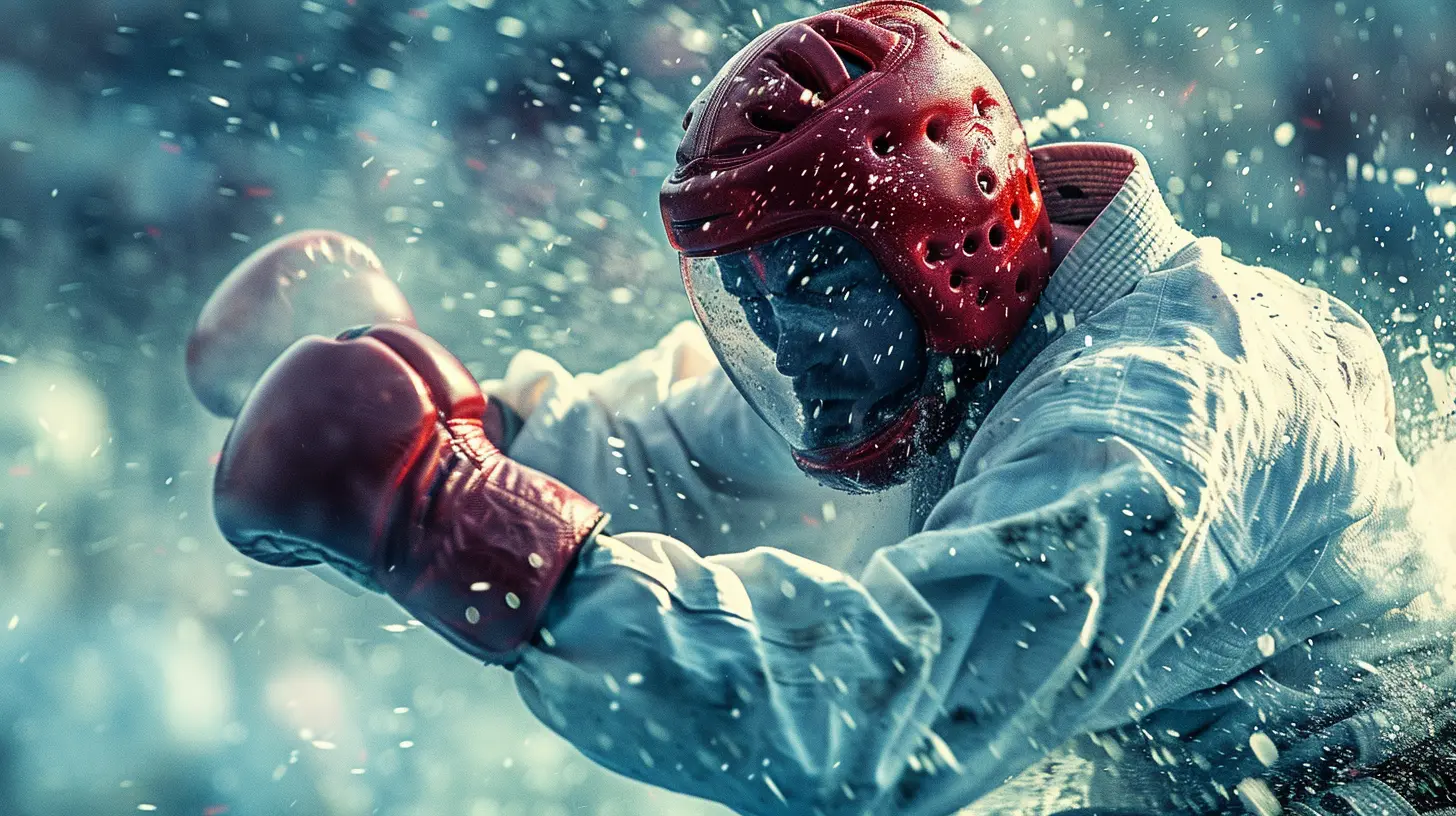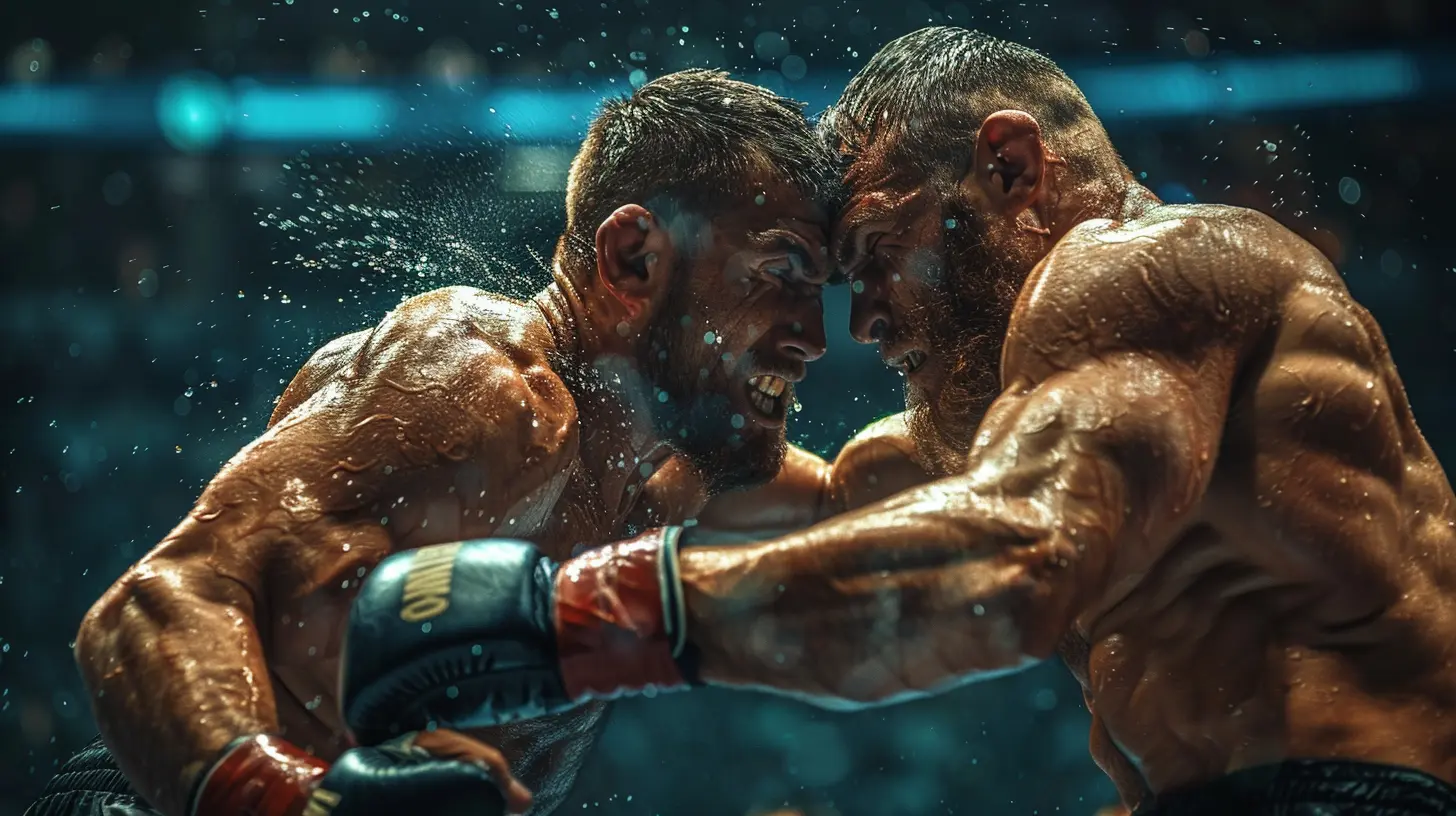Wrestling and Martial Arts: How Grappling Influences Other Combat Sports
22 September 2025
When you think about combat sports, what comes to mind? Brutal knockouts in boxing? Lightning-fast kicks in Taekwondo? Or maybe the relentless takedowns of wrestlers? While striking is flashy and gets all the attention, the truth is, grappling plays a massive role in shaping many martial arts.
Wrestling, Brazilian Jiu-Jitsu (BJJ), Judo, and other grappling disciplines bring an entirely different edge to fighting. They don’t just teach you how to overpower someone; they teach control, balance, and the art of using an opponent’s strength against them. Whether you're an MMA fan or just someone curious about combat sports, understanding how grappling influences other fighting styles can be a game-changer.

The Grappling Foundation: What Is It All About?
Before we dive into how wrestling and grappling impact various martial arts, let’s first define what grappling really is.Grappling is the art of close-combat fighting that focuses on taking away your opponent’s ability to strike while gaining dominant control. It involves takedowns, submissions, pins, and positional control rather than punches and kicks. Wrestling, Jiu-Jitsu, Judo, and Sambo are all prime examples of grappling-based martial arts.
Now, you might be thinking, “Okay, but how does that help in a sport like boxing or kickboxing, where striking is king?” The answer: more than you might expect.

Wrestling’s Influence on MMA: A Game-Changer
If you've ever watched the UFC, you've probably noticed that a large number of champions and top contenders have a strong wrestling background. Why? Because wrestling gives fighters an undeniable edge in one of the most crucial aspects of combat: control.Takedown Dominance
A well-trained wrestler can dictate where the fight takes place. Want to stand and trade punches? Good luck—your opponent might just double-leg you into the mat. If you’re a striker, facing a wrestler can feel like trying to fight a bear that only wants to drag you into deep waters.Grappling for Defense
Even if you aren’t actively taking people down, a strong wrestling base teaches you how to avoid being taken down. Fighters like Israel Adesanya, primarily a striker, have developed incredible takedown defense to keep the fight where they want it—on the feet.Cardio & Endurance
Ever wrestled for even 30 seconds? It feels like your lungs are on fire. Wrestlers build insane endurance because grappling is physically demanding. This conditioning allows them to push through exhaustion while opponents are gasping for air.
The Impact of BJJ: The Art of Submissions
Brazilian Jiu-Jitsu changed the combat world when Royce Gracie dominated early UFC events, forcing bigger and stronger opponents to tap out. But how does BJJ influence other combat sports?Ground Game Awareness
Strikers with no grappling experience often panic when they hit the ground. BJJ practitioners, on the other hand, stay calm, knowing they can either escape or submit their opponent. Even boxers and kickboxers are training in BJJ to ensure they aren’t helpless on the mat.The Art of Control
BJJ is all about controlling your opponent, not just submitting them. Whether it’s in MMA or self-defense, knowing how to manipulate an opponent’s weight and movement gives you a massive advantage.Submission Escapes & Survival Skills
Even if you don’t focus on submissions, understanding how to defend against them is crucial. Many modern fighters train BJJ defensively to avoid getting caught in armbars, triangles, or chokes.
Judo’s Influence: Throws and Balance
Judo, like wrestling and BJJ, is a grappling-heavy martial art, but it specializes in one key area—throws.Takedowns From Standing
While wrestling favors double-leg and single-leg takedowns, Judo specializes in trip takedowns and hip throws. This skill set allows judokas to toss their opponents effortlessly, even in striking-based sports like Muay Thai and Kickboxing, where clinch fighting is essential.Improved Balance & Footwork
A Judoka’s ability to manipulate balance makes them tricky opponents. In striking-heavy disciplines, knowing how to maintain balance can mean the difference between staying on your feet or getting knocked down.Grip Fighting Skills
In Judo, grips are everything. Controlling an opponent’s arms or lapels is a huge part of the game. This skill translates well into MMA and even boxing, where clinch fighting and hand controls are crucial.Grappling’s Role in Kickboxing and Boxing
You might be surprised to hear that grappling even influences striking arts like boxing and Muay Thai. While these sports focus on punching and kicking, grappling principles still play a role.Clinch Control in Muay Thai
Muay Thai has a strong clinching game, where fighters use their grip to control their opponents while landing devastating knees and elbows. A fighter with a wrestling or Judo background can dominate this position with ease.Dirty Boxing in the Clinch
Ever heard of boxers like Muhammad Ali or Mike Tyson using clinching tactics to avoid damage? That’s grappling at work! Boxing may not allow takedowns, but understanding how to control an opponent during a clinch can neutralize an aggressive fighter.Defensive Movement & Distance Management
Wrestlers are trained to react quickly to an opponent's moves, and this awareness helps in striking-based sports. Many wrestlers transitioning to striking arts adopt a lower stance and excellent movement, making them harder to hit and more unpredictable.
Grappling in Self-Defense and Street Fighting
Alright, let's be real—nobody wants to be in a street fight, but if you ever find yourself in a bad situation, grappling can save you.Taking Down Aggressors
A trained grappler can easily take down an untrained opponent, nullifying wild punches and preventing unnecessary damage.Controlling Without Striking
Sometimes, the goal isn't to knock someone out, but to diffuse a situation. Grappling allows you to control someone without resorting to dangerous strikes, making it useful for law enforcement, bouncers, and self-defense experts.Surviving in Any Position
Whether you’re standing or on the ground, grappling makes you comfortable in any scenario. A trained grappler won’t panic if they get tackled or grabbed—they’ll simply react and counter.Why Every Fighter Should Train Grappling
Even if you’re a dedicated striker, neglecting grappling is like trying to win a chess game without knowing half the moves. Here’s why every fighter should train at least some form of wrestling, BJJ, or Judo:- Gives You Better Defense – Learning takedown defense means staying on your feet against grapplers.
- Improves Strength & Conditioning – Grappling workouts build incredible strength, endurance, and toughness.
- Makes You Well-Rounded – Being dangerous in all areas makes you a complete fighter, rather than a one-trick pony.
If you’re serious about martial arts, don’t overlook grappling. Whether it's wrestling, Judo, or BJJ, adding ground skills to your arsenal makes you a much more dangerous and well-rounded fighter.
Final Thoughts
Grappling isn’t just for MMA fighters and wrestlers—it plays a massive role in all combat sports. The ability to control, take down, and submit an opponent is invaluable, whether you’re stepping into the ring, the octagon, or just learning self-defense.So if you’ve been avoiding grappling because you prefer striking, maybe it’s time to rethink your game plan. The best fighters are the ones who can do it all, and grappling is a major key to dominance in any combat sport.
all images in this post were generated using AI tools
Category:
WrestlingAuthor:

Frankie Bailey
Discussion
rate this article
1 comments
Sophie McVey
Grappling techniques from wrestling and martial arts significantly enhance the performance and strategy in combat sports. By integrating joint locks, throws, and positional control, athletes gain a tactical edge, fostering versatility and adaptability in their fighting styles.
October 7, 2025 at 11:27 AM

Frankie Bailey
Thank you for your insightful comment! I completely agree that integrating grappling techniques from wrestling and martial arts significantly enhances an athlete's performance and strategic approach in combat sports.


